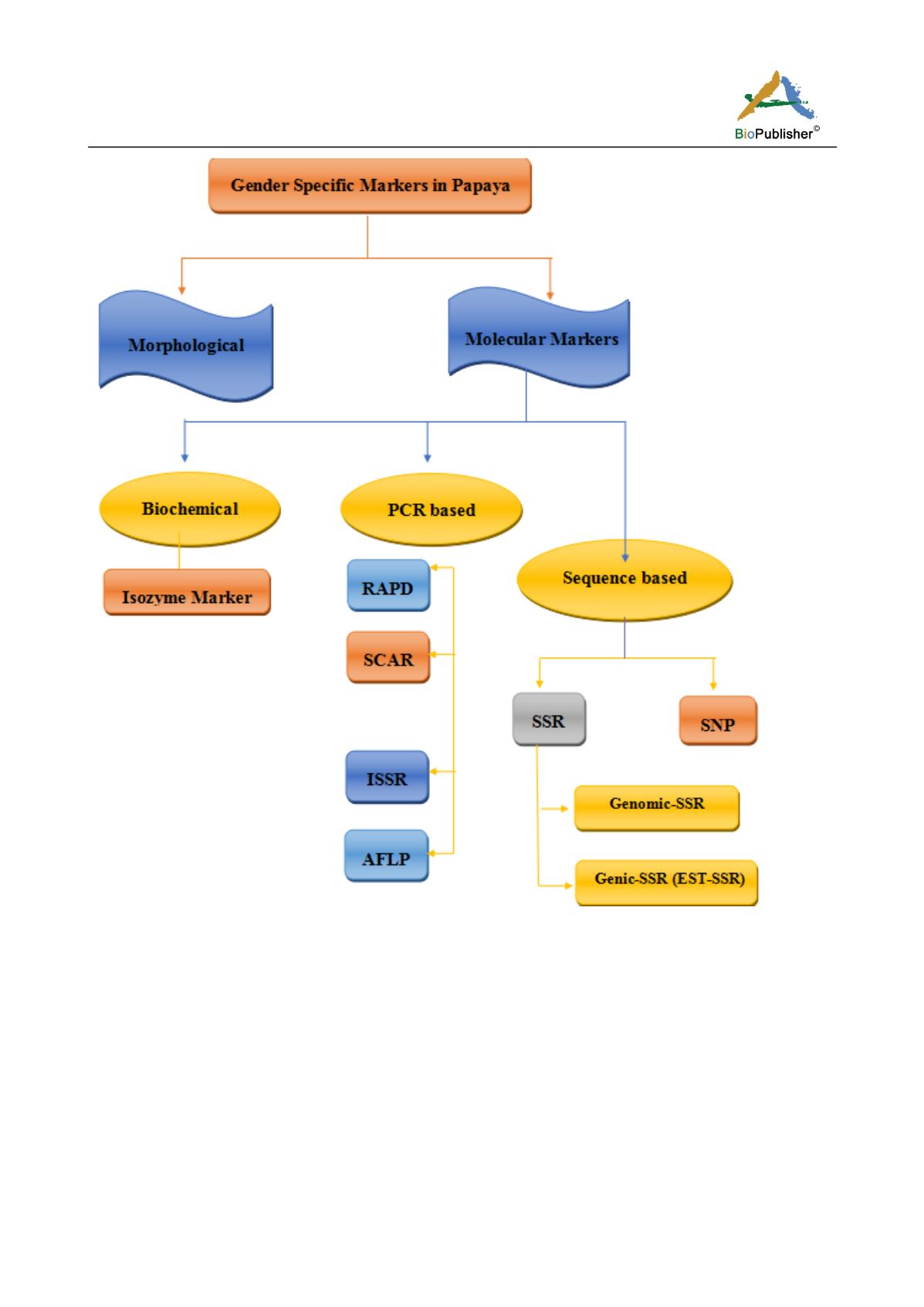
Molecular Plant Breeding 2016, Vol.7, No.28, 1
-
18
8
Figure 3 Marker techniques utilized for identification of male, female and hermaphrodite plants in papaya (Idea taken from
Heikrujam M, Sharma K, Prasad M, Agrawal V. 2015. Review on different mechanisms of sex determination and sex-linked
molecular markers in dioecious crops: a current update. Euphytica, 201:161-194)
5.1 Morphological identification
Morphological and cytological studies were the first markers to be used for early diagnosis of gender in papaya.
Some morphological traits such as color of seed coat and shape or morphology of root have been linked with the
sex type of papaya. Females are presumed to possess a light color seed coat and branched root shape, while males
have dark seed coat and straight root shape. However, these studies have not been verified scientifically for sex
type identification (Magdalita and Mercado, 2003). A morphological study was done to determine the maleness or
femaleness in papaya based on the leaf morphology and rate of growth. It revealed that the male exhibit more
number of three lobed leaves with slow growth rate whereas female seedlings show more vigor and faster growth
and are abundant in five lobed leaves (Reddy et al., 2012). Demandante et al., (2014) identified the sex types of
papaya based on morphology of leaf shape using Elliptic Fourier Analysis (EFA). The distribution of leaf shape


